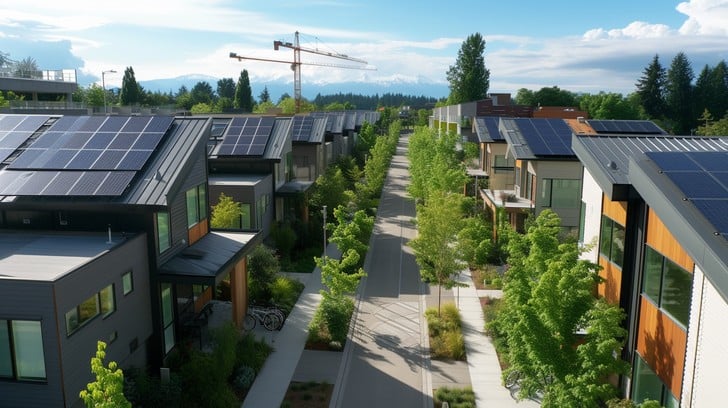
Green Building Certification Systems: Understanding Their Impact and Significance
As the world increasingly prioritizes sustainability, green building certification systems have become a cornerstone in the construction industry. These systems not only guide the creation of environmentally friendly buildings but also ensure that these structures contribute positively to the ecosystem. Understanding these systems is essential for anyone involved in construction, architecture, or real estate.

What Are Green Building Certification Systems?
Green building certification systems are benchmarks used to assess and recognize structures that meet specific environmental standards. They play a pivotal role in promoting sustainable development and encouraging the use of eco-friendly materials and methods. These systems assess various factors, including energy efficiency, water usage, indoor environmental quality, and the building’s overall impact on the environment.
The Importance of Green Building Certification
The significance of these systems cannot be overstated. By providing a structured framework, they help architects and builders create buildings that are not only energy-efficient but also healthier for occupants. Moreover, certified buildings often enjoy higher market value and can benefit from government incentives.
Boosting Energy Efficiency
Energy efficiency is a critical component of green building certifications. By focusing on reducing energy consumption, these systems help lower operating costs and minimize the carbon footprint of buildings. For instance, incorporating natural ventilation strategies can significantly reduce the need for artificial heating and cooling.
Enhancing Indoor Environmental Quality
Indoor environmental quality is another crucial aspect. Certified buildings often incorporate better air filtration systems, natural lighting, and non-toxic materials. This not only improves the health and well-being of occupants but also enhances productivity and comfort.
Key Green Building Certification Systems
There are several prominent green building certification systems globally, each with its unique criteria and focus areas. Understanding these can help builders and developers choose the best fit for their projects.
LEED (Leadership in Energy and Environmental Design)
LEED is one of the most widely recognized certification systems. It offers a comprehensive framework for identifying and implementing practical and measurable green building design, construction, operations, and maintenance solutions.
BREEAM (Building Research Establishment Environmental Assessment Method)
BREEAM is another leading system, particularly popular in Europe. It assesses a building’s environmental impact across several categories, including energy, water, and materials.
WELL Building Standard
The WELL Building Standard focuses on the health and wellness of building occupants. It complements other green building certification systems by emphasizing human health alongside environmental sustainability.
The Role of Innovative Design in Green Buildings
Innovation is at the heart of sustainable building design. Many green building certification systems encourage the use of innovative solutions to meet environmental goals. For example, innovative housing designs can incorporate smart technology to optimize energy use and improve efficiency.
The Economic Benefits of Green Building Certifications
Beyond environmental and health advantages, certified green buildings offer significant economic benefits. They often result in reduced operating costs due to lower energy and water consumption. Additionally, these buildings can command higher rents and sale prices, making them a smart investment for developers.
Challenges and Opportunities in Green Building Certifications
While there are many benefits to green building certifications, there are also challenges. These include the initial cost of certification and the need for specialized knowledge and skills. However, these challenges are outweighed by the long-term benefits and opportunities for innovation and leadership in the industry.
Overcoming Initial Costs
Although the initial investment for certification can be high, the long-term savings on energy and maintenance costs make it worthwhile. Moreover, government incentives and subsidies can help offset these initial expenses.
Embracing Innovation
The demand for sustainable buildings continues to grow, encouraging innovation in materials, design, and construction processes. This presents an opportunity for businesses to lead in a rapidly evolving market.
Global Trends in Green Building Certifications
The global push towards sustainability has led to an increase in green building certifications worldwide. Countries are adopting these systems to meet international environmental targets and improve living standards. For instance, the United Nations Economic Commission for Europe promotes sustainable urban development and encourages the adoption of green building practices.

FAQs on Green Building Certification Systems
What is the purpose of green building certification?
Green building certification aims to recognize and promote environmentally responsible and resource-efficient buildings. It provides a framework for sustainable design, construction, and operation.
How do green building certifications benefit homeowners?
Homeowners benefit from green building certifications through reduced energy and water bills, improved indoor air quality, and increased property value.
Are green building certifications mandatory?
While not mandatory, green building certifications are highly recommended for developers and builders aiming to create sustainable and marketable structures.
This article contains affiliate links. We may earn a commission at no extra cost to you.